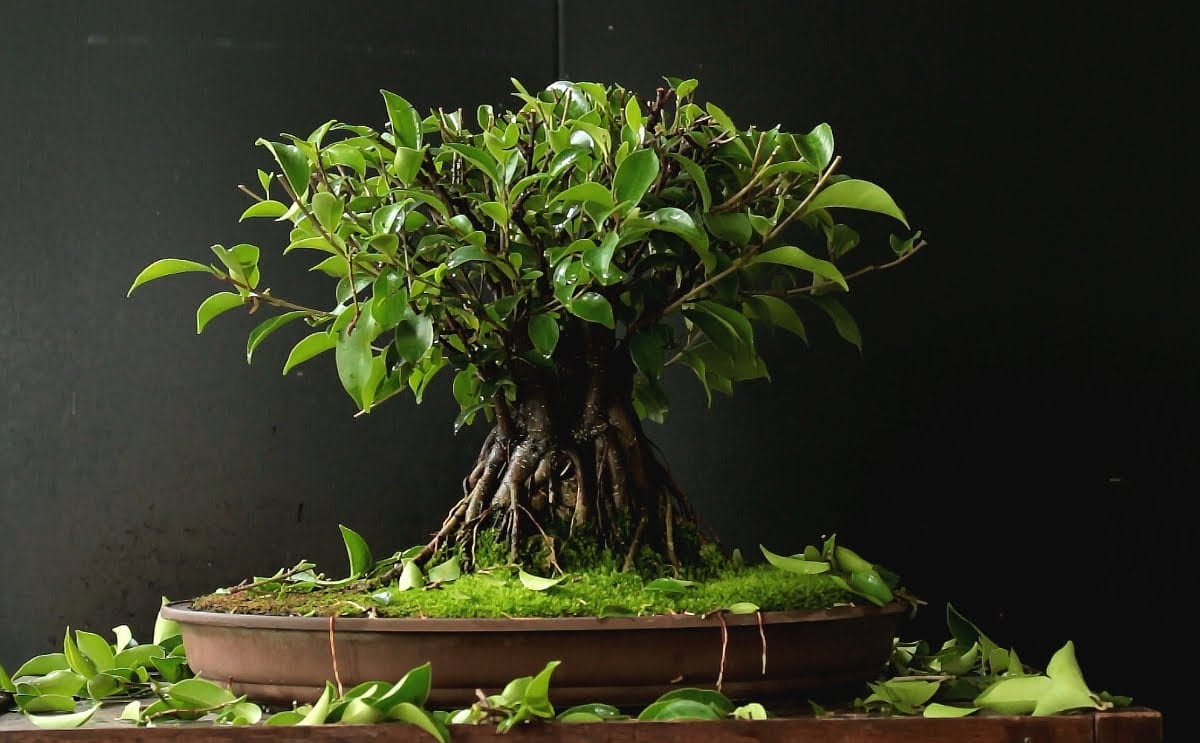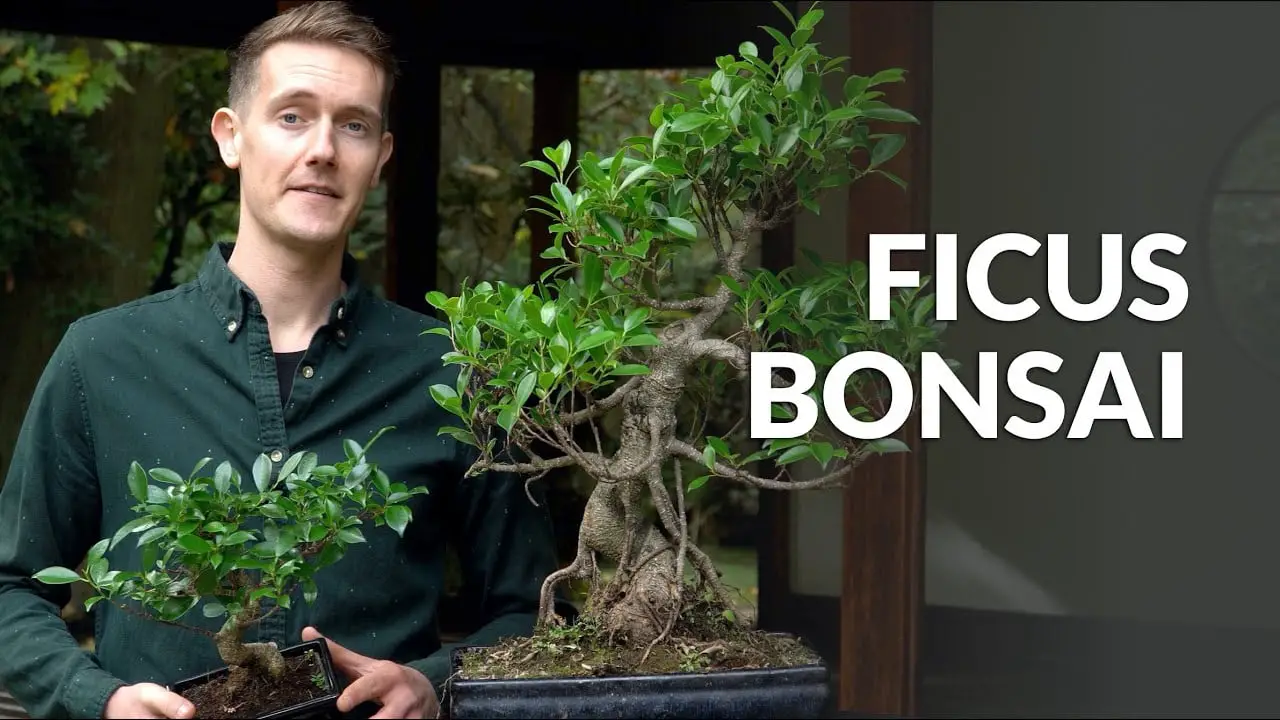Ficus bonsai, a popular choice among bonsai enthusiasts, have long been cherished for their ability to thrive indoors. However, many bonsai enthusiasts wonder whether these exquisite trees can also flourish outdoors. In this article, we will explore the possibility of keeping ficus bonsai outside.
We will delve into the specific requirements and considerations to ensure the tree’s well-being, as well as gather expert opinions and research from credible sources. Additionally, we will provide relevant case studies and examples to illustrate the points and offer unique strategies and techniques for successfully growing ficus bonsai outdoors. So, if you’re curious about taking your ficus bonsai beyond the confines of your home, join me as we uncover the secrets to creating a thriving outdoor environment for these captivating trees.
Can ficus bonsai live outside?
This is a common question among bonsai enthusiasts, and the answer is yes! Ficus bonsai can thrive outdoors if certain factors are taken into consideration. In this article, we will explore the various factors that can affect the outdoor survival of ficus bonsai, the ideal outdoor conditions for their growth, tips for ensuring their health, and even success stories of outdoor ficus bonsai. So, if you’re thinking of taking your ficus bonsai outside, keep reading to learn everything you need to know.
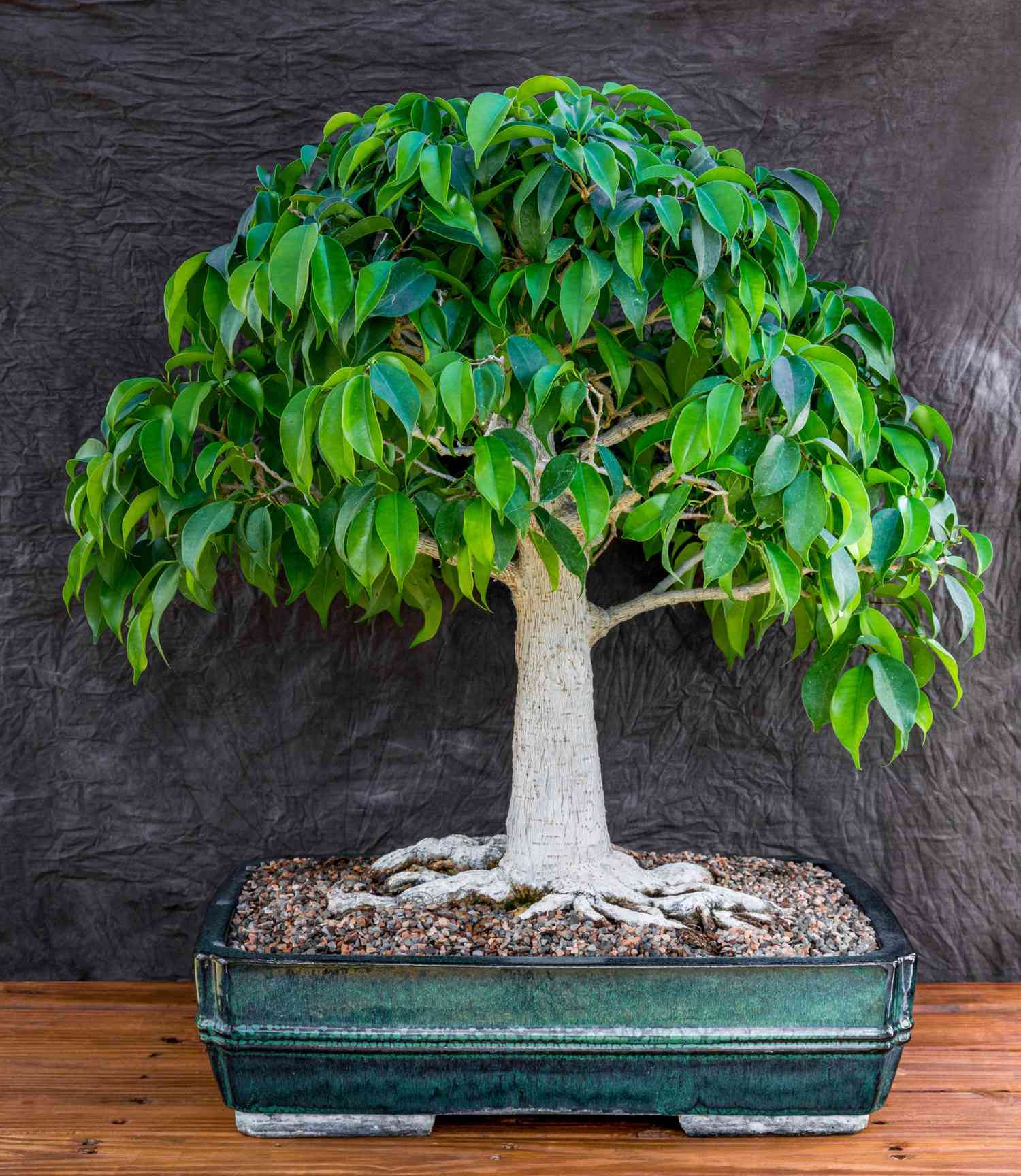
Factors Affecting the Outdoor Survival of Ficus Bonsai
Temperature
Temperature plays a crucial role in the outdoor survival of ficus bonsai. These trees are tropical in nature and, therefore, prefer warmer temperatures. Most ficus varieties can withstand temperatures between 60°F and 85°F (15°C and 30°C). However, extreme cold or heat can be detrimental to their health. It is important to choose a ficus bonsai variety that is suitable for your local climate to ensure its survival outdoors.
Humidity
Humidity is another factor that needs to be considered when keeping ficus bonsai outdoors. As tropical trees, ficus bonsai thrive in high humidity environments. If you live in an area with low humidity, you may need to take additional measures to maintain the moisture levels around your bonsai. This could include misting the foliage or placing a humidity tray filled with water underneath the bonsai.
Light
Proper lighting is essential for the growth and health of any bonsai, including ficus bonsai. These trees require bright, indirect light for most of the day. If you plan to keep your ficus bonsai outdoors, ensure that it receives adequate sunlight but is protected from direct afternoon sun, which can be too intense and cause leaf burn. Placing your bonsai in a location with partial shade or using a shade cloth can help strike the right balance of light for optimal growth.
Wind
While ficus bonsai can tolerate some wind, excessive and strong winds can cause damage to their delicate branches and leaves. It is important to protect your bonsai from strong gusts of wind by placing it in a sheltered spot or using windbreaks, such as a fence or surrounding shrubs. This will help prevent the tree from getting stressed and promote its overall health.
Rainfall
Ficus bonsai appreciate regular watering but also need good drainage to prevent waterlogged roots. Rainfall can be a valuable source of water for your bonsai, but it’s essential to ensure that excess water can freely drain away. Using well-draining soil and positioning the bonsai on a slanting surface can help facilitate proper drainage. However, heavy rainfall can saturate the soil and lead to waterlogging, which can be harmful to the bonsai. Monitoring the moisture levels and adjusting your watering schedule accordingly is crucial to prevent overwatering and promote a healthy root system.
Pests and Diseases
Just like any other plant, ficus bonsai are susceptible to pests and diseases. Common pests that can affect their outdoor survival include aphids, scale insects, and spider mites. Regularly inspecting your bonsai for signs of pest infestation and taking appropriate measures, such as using organic insecticides or introducing beneficial insects, can help keep them at bay. Additionally, fungal diseases, such as root rot or leaf spot, can pose a threat to the health of your bonsai. Proper care practices, including good watering techniques and ensuring adequate air circulation, can help prevent these issues.
Choosing the Right Ficus Bonsai Variety for Outdoor Growth
When it comes to choosing a ficus bonsai variety for outdoor growth, there are several options to consider. Here are three popular varieties that are well-suited for outdoor conditions:
Ficus Retusa
Ficus retusa, also known as the “Indian Laurel Fig,” is a popular choice for outdoor bonsai cultivation. It has small green leaves and a twisting trunk, which adds to its aesthetic appeal. This variety can withstand a wide range of temperatures and is relatively easy to care for, making it suitable for beginners.
Ficus Microcarpa
Ficus microcarpa, commonly referred to as the “Chinese Banyan,” is another excellent choice for outdoor growth. It has small, deep green leaves and an attractive trunk with aerial roots. Ficus microcarpa is known for its resilience and can tolerate various outdoor conditions, making it a versatile option for bonsai enthusiasts.
Ficus Benjamina
Ficus benjamina, also known as the “Weeping Fig,” is a popular indoor bonsai choice, but it can also be grown successfully outdoors. It has glossy green leaves and a graceful, weeping growth habit. While ficus benjamina can be a bit more demanding in terms of care, it can thrive in the right outdoor conditions, including partial shade and protection from harsh elements.
Preparing Ficus Bonsai for Outdoor Living
Before transitioning your ficus bonsai to an outdoor environment, it is important to take certain steps to ensure its successful adaptation. Here are some key considerations:
Gradual Acclimatization
Ficus bonsai, especially those previously grown indoors, need to be gradually acclimatized to the outdoor environment. This process involves exposing the bonsai to outdoor conditions for increasing periods each day. Start by placing your bonsai outdoors in a shaded or partially shaded area for a few hours and gradually increase the duration over a few weeks. This will allow the bonsai to adjust to the outdoor temperature, light, and humidity levels without experiencing shock.
Pruning and Shaping
Pruning and shaping are essential practices for maintaining the desired form and aesthetics of your ficus bonsai. Before moving your bonsai outdoors, it is a good idea to prune any excessive growth and shape it to your liking. This will not only help maintain the overall shape but also promote new growth that is better adapted to the outdoor environment.
Repotting
If your ficus bonsai is due for repotting, it is best to do it before moving it outdoors. Repotting provides an opportunity to refresh the soil, remove any tangled roots, and promote better water and nutrient absorption. Choose a well-draining soil mixture suitable for ficus bonsai and ensure that the new pot provides adequate room for root growth.
Soil Considerations
Ficus bonsai prefer a well-draining soil mixture that retains enough moisture without becoming waterlogged. A typical bonsai soil mix consists of components like akadama, pumice, and lava rock. These materials promote good drainage while retaining enough moisture for the roots. It is also a good idea to include organic matter, such as sphagnum moss or compost, to improve water retention.
Watering Techniques
Proper watering is crucial for the health of your ficus bonsai. While ficus bonsai prefer regular watering, it is important to avoid overwatering or underwatering. The frequency of watering will depend on various factors, including the climate, humidity levels, and the moisture retention capacity of the soil. It is best to water your bonsai when the top inch of the soil feels slightly dry. Water thoroughly and ensure that the excess water drains out of the pot to prevent waterlogging.
Ideal Outdoor Conditions for Ficus Bonsai
To ensure that your ficus bonsai thrives in an outdoor environment, it is important to provide it with the ideal conditions. Here are a few key factors to consider:
Temperature Range
As mentioned earlier, ficus bonsai prefer temperatures between 60°F and 85°F (15°C and 30°C). It is important to select a suitable location that provides these temperature ranges throughout the year. If you live in an area with extreme temperatures, consider providing additional protection during the hottest or coldest months.
Humidity Levels
Ficus bonsai thrive in high humidity environments. While it may be challenging to replicate the humidity levels of their native tropical habitats, you can increase humidity around your bonsai by misting the foliage regularly, using a humidity tray, or grouping multiple bonsai together. This will help create a microclimate that is more favorable for your bonsai’s growth.
Light Requirements
Proper lighting is crucial for the health and growth of ficus bonsai. They require bright, indirect light for most of the day. If your outdoor space receives excessive direct sunlight, it can lead to leaf burn. Placing your bonsai in a partially shaded area or using a shade cloth can help protect it from intense sunlight while still providing the necessary light for photosynthesis.
Protection from Strong Winds
As mentioned earlier, ficus bonsai can withstand some wind, but excessive gusts can cause damage. It is important to position your bonsai in a sheltered spot or use windbreaks, such as a fence or surrounding shrubs, to protect it from strong winds. This will help prevent branches from breaking and leaves from drying out.
Rainfall and Drainage
Regular rainfall can be beneficial for ficus bonsai, but it is important to ensure proper drainage. Heavy rainfall can saturate the soil and potentially lead to root rot. Positioning your bonsai on a slanting surface or incorporating a layer of gravel at the bottom of the pot can help facilitate adequate drainage. Additionally, monitor the moisture levels and adjust your watering schedule accordingly to prevent overwatering.
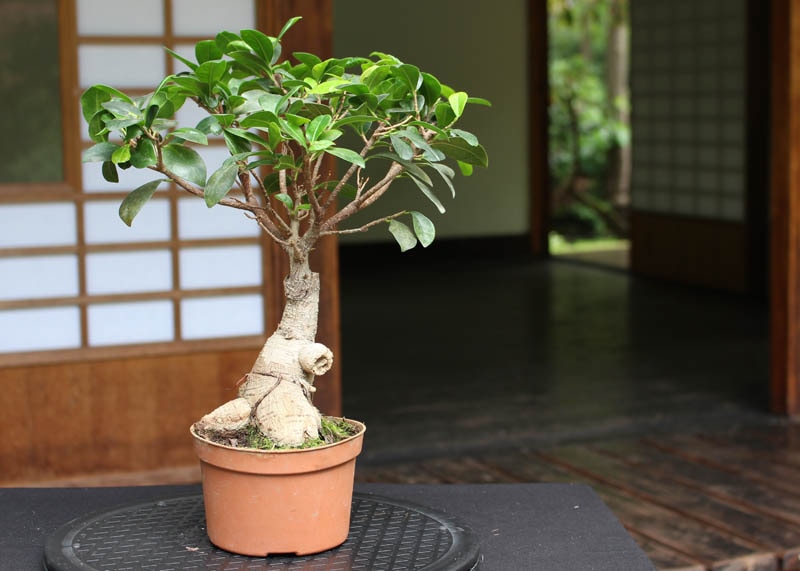
Potential Challenges of Outdoor Ficus Bonsai
While ficus bonsai can thrive outdoors, there are several challenges that bonsai enthusiasts may face. Being aware of these challenges can help you take appropriate measures to ensure the health of your bonsai. Here are some potential challenges to consider:
Extreme Temperatures
Extreme temperatures, whether it’s extreme heat or cold, can be challenging for ficus bonsai. If your region experiences temperature extremes, consider providing extra protection during these periods. Methods such as shading the bonsai or moving it indoors temporarily can help mitigate the impact of extreme temperatures.
Insufficient Light
Insufficient light can hinder the growth and health of your ficus bonsai. If you notice that your bonsai is not receiving adequate light, consider providing supplemental lighting in the form of grow lights. This can help compensate for the lack of natural light and promote optimal growth.
Leaf Drop
Leaf drop is a common issue faced by ficus bonsai when they are moved outdoors or experience changes in environmental conditions. This is often a natural response to stress and can be mitigated by ensuring that the bonsai is acclimatized gradually and receives proper care, including adequate watering, lighting, and humidity levels.
Pest Infestation
Just like any other plant, ficus bonsai are prone to pest infestations. Common pests that can affect them include aphids, scale insects, and spider mites. Regularly inspecting your bonsai for signs of infestation and addressing the issue promptly can help prevent the pests from causing significant damage. Using organic insecticides or introducing beneficial insects, such as ladybugs or predatory mites, can also be effective in controlling pest populations.
Overwatering or Underwatering
Achieving the right balance of watering can be challenging, and both overwatering and underwatering can have detrimental effects on ficus bonsai. Overwatering can lead to root rot, while underwatering can cause the bonsai to dry out and suffer from dehydration. It is important to monitor the moisture levels of the soil and adjust your watering schedule accordingly to ensure that your bonsai receives adequate but not excessive water.
Tips for Ensuring the Outdoor Health of Ficus Bonsai
To ensure the outdoor health of your ficus bonsai, here are some helpful tips:
Monitoring Temperature Changes
Regularly monitor the temperature fluctuations in your outdoor environment. Extreme temperatures can stress ficus bonsai, so additional protection may be necessary during such periods. This could include providing temporary shading or moving the bonsai indoors if needed.
Providing Additional Light
If your ficus bonsai is not receiving adequate natural light, especially during the winter months, consider providing supplemental lighting. Grow lights can be used to provide the necessary light intensity and spectrum required for optimal growth.
Proper Pruning and Training
Regular pruning and training are important aspects of bonsai care. By pruning back excessive growth and shaping the bonsai, you can maintain its desired form and ensure optimal health. Prune during the appropriate seasons and do so with proper bonsai tools to avoid damaging the tree.
Regular Pest Inspection
Regularly inspecting your bonsai for signs of pests is crucial for timely intervention. Catching pest infestations early can prevent the pests from causing significant damage. Look for signs such as discolored leaves, sticky residue, or visible pests on the leaves or branches.
Balanced Watering Schedule
Establishing a balanced watering schedule is crucial for the health of your ficus bonsai. Monitor the moisture levels of the soil and water when the top inch feels slightly dry. Ensure that the excess water drains out of the pot and avoid letting the bonsai sit in standing water, as this can lead to root rot.
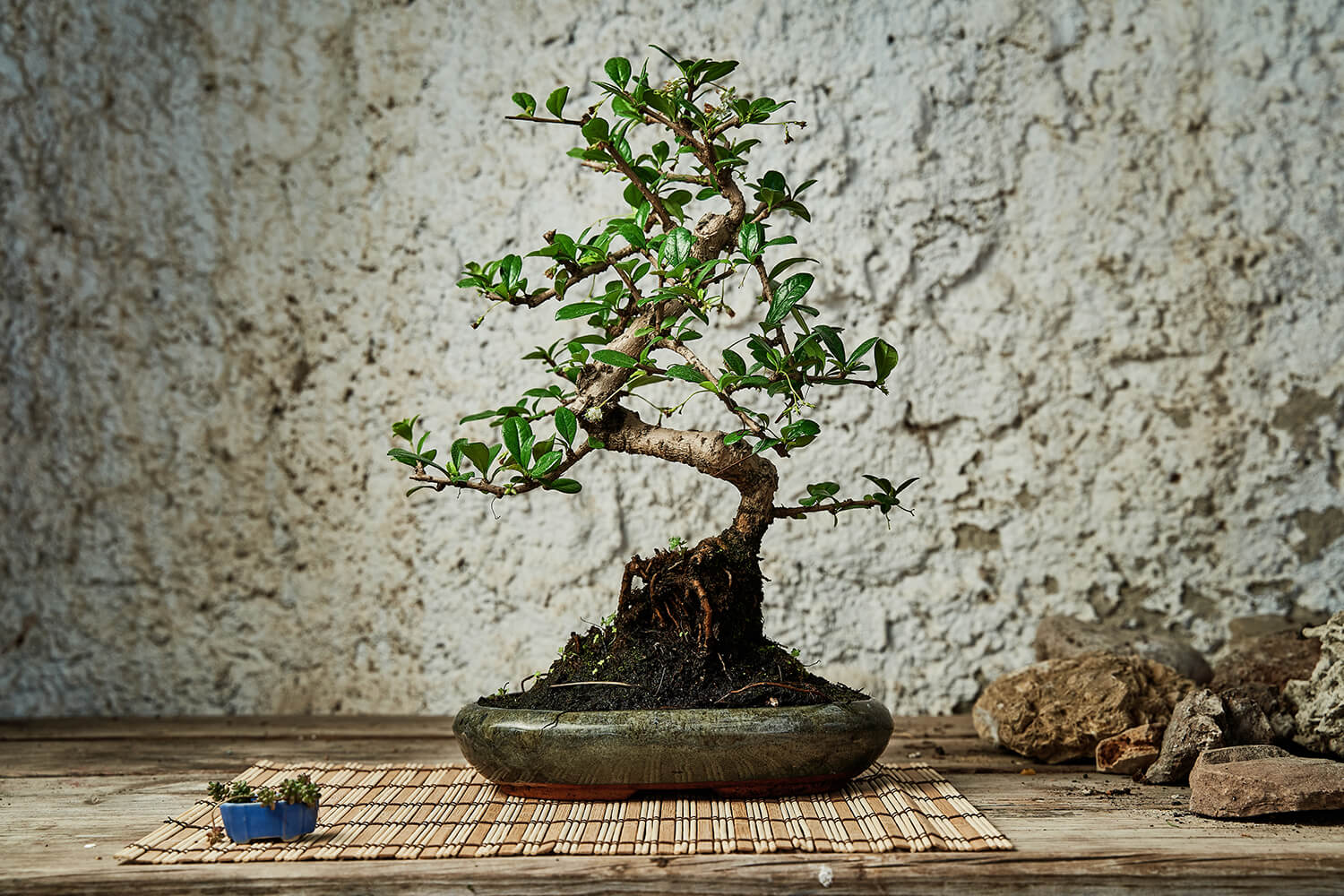
Overwintering Ficus Bonsai
Overwintering ficus bonsai can be a challenging task, as they are tropical trees that are not naturally adapted to cold temperatures. However, with proper care, you can successfully overwinter your ficus bonsai. Here are some key considerations:
Selecting a Suitable Location
Choose a location for overwintering that provides adequate protection from freezing temperatures and cold drafts. This could include moving your bonsai indoors, such as a greenhouse or a well-lit room, or using protective coverings like frost blankets or garden fabric.
Protection from Frost
Frost can be particularly damaging to ficus bonsai. It is important to protect your bonsai from frost by using insulating materials such as burlap or frost blankets. Additionally, avoiding placing your bonsai directly on cold surfaces, such as concrete or metal, can also help prevent frost damage.
Reduced Watering
During the winter months, ficus bonsai generally require less frequent watering due to reduced growth and water evaporation. Monitor the moisture levels of the soil and adjust your watering schedule accordingly. Be careful not to overwater, as this can lead to root rot in the colder temperatures.
Winter Pruning
Pruning during the winter months should be kept to a minimum to avoid stimulating new growth, which is more susceptible to cold damage. Instead, focus on light maintenance pruning, such as removing any dead or diseased branches.
Success Stories of Outdoor Ficus Bonsai
Outdoor ficus bonsai can truly thrive in the right conditions. Here are a couple of success stories to inspire you:
Case Study 1: Thriving Ficus Retusa Bonsai on a Patio
In a patio garden, a ficus retusa bonsai has flourished under ideal outdoor conditions. With partial shade during the hottest part of the day and protection from strong winds, the bonsai has been able to thrive. Proper watering and routine pest inspections have kept the bonsai healthy and free from infestations. The owner has also practiced regular pruning to maintain the desired shape and size. The success of this ficus retusa bonsai serves as a testament to the possibility of outdoor cultivation.
Case Study 2: Beautiful Ficus Microcarpa Bonsai in a Courtyard
In a sunny courtyard, a ficus microcarpa bonsai has transformed into a true centerpiece. With the right combination of light, temperature, and humidity, this bonsai has thrived in the outdoor environment. Regular care, including appropriate watering and proper pruning, has contributed to the bonsai’s overall health and vitality. The owner has also taken steps to protect the bonsai from extreme weather conditions, such as providing temporary shade during excessively hot periods. This ficus microcarpa bonsai is a stunning example of the beauty that can be achieved through outdoor cultivation.
:max_bytes(150000):strip_icc()/growing-ginseng-ficus-bonsai-5083016-hero-3f7e663f55fc4470b2ec1e8f9fb45545.jpg)
Best Places to Display Outdoor Ficus Bonsai
When it comes to displaying your outdoor ficus bonsai, there are several options to consider. Here are a few of the best places to showcase your bonsai:
Garden
A garden can be a wonderful place to display your ficus bonsai. Placing it among other plants and trees can create a harmonious and natural setting. Ensure that the bonsai is positioned in a location that provides proper light, temperature, and wind protection.
Balcony
If you have a balcony, it can serve as an excellent location for your ficus bonsai. Ensure that the bonsai receives adequate light and protection from strong winds. You can also use the balcony railing to create a visually appealing display by arranging multiple bonsai at different heights.
Patio
A patio can provide a secluded and tranquil space for your ficus bonsai. Place your bonsai on a table or stand where it can receive sufficient light and be protected from extreme weather conditions. You can also create a visually pleasing arrangement by incorporating other outdoor elements, such as sculptures or small water features.
Courtyard
A courtyard can offer a larger space to showcase your ficus bonsai. Consider placing it as a focal point in the center or in a designated area where it can be admired from different angles. Ensure that the bonsai receives the right amount of light, temperature, and protection from strong winds.
Conclusion
In conclusion, ficus bonsai can thrive outdoors when given the appropriate conditions and care. Factors such as temperature, humidity, light, wind, rainfall, and pest control play a vital role in their survival. By choosing the right ficus bonsai variety, preparing it for outdoor living, and providing ideal outdoor conditions, you can ensure the health and beauty of your bonsai. Overwintering, monitoring for potential challenges, and following tips for outdoor care will further contribute to the success of your ficus bonsai. So, with the right knowledge and dedication, you can create a thriving outdoor bonsai display that will bring you joy for years to come.
